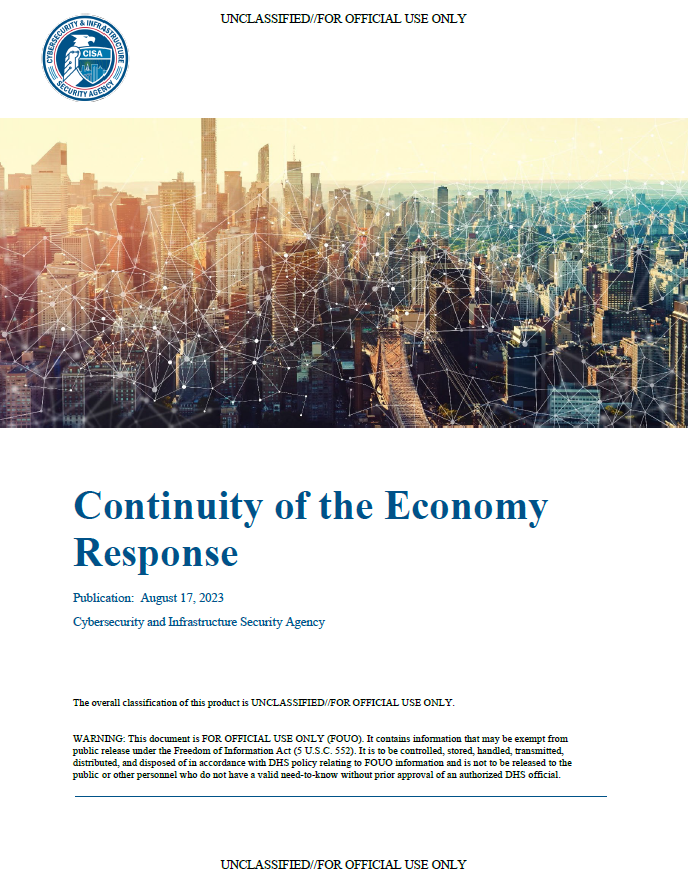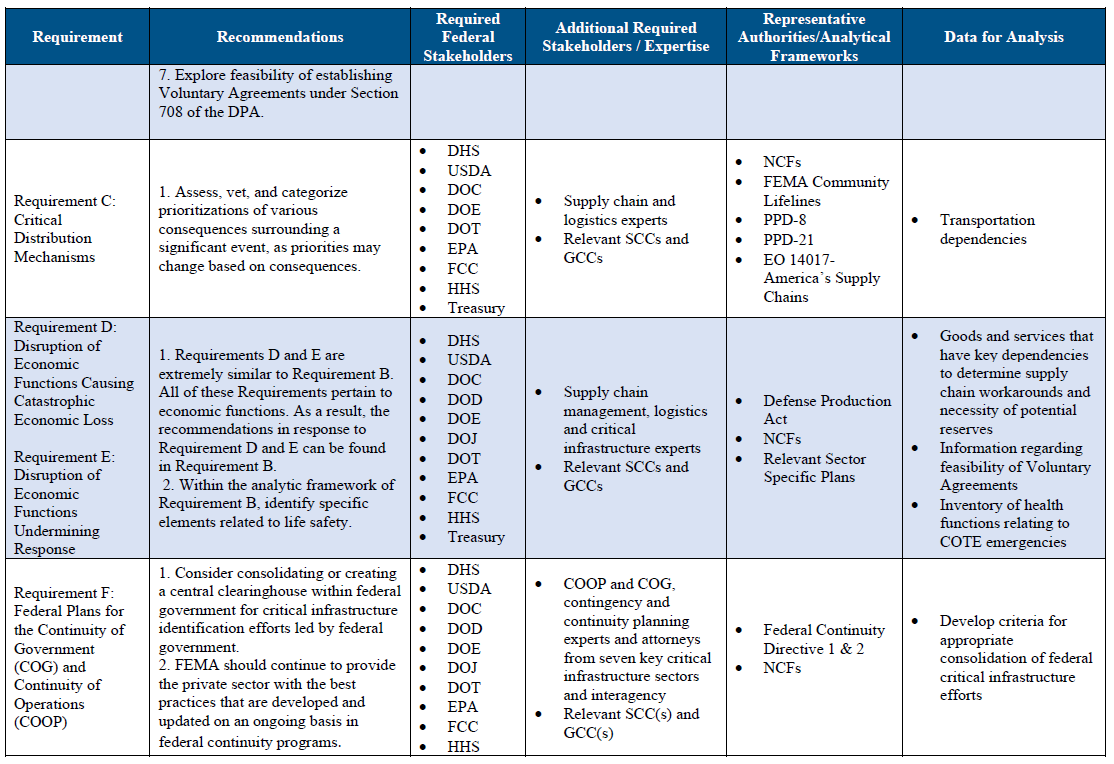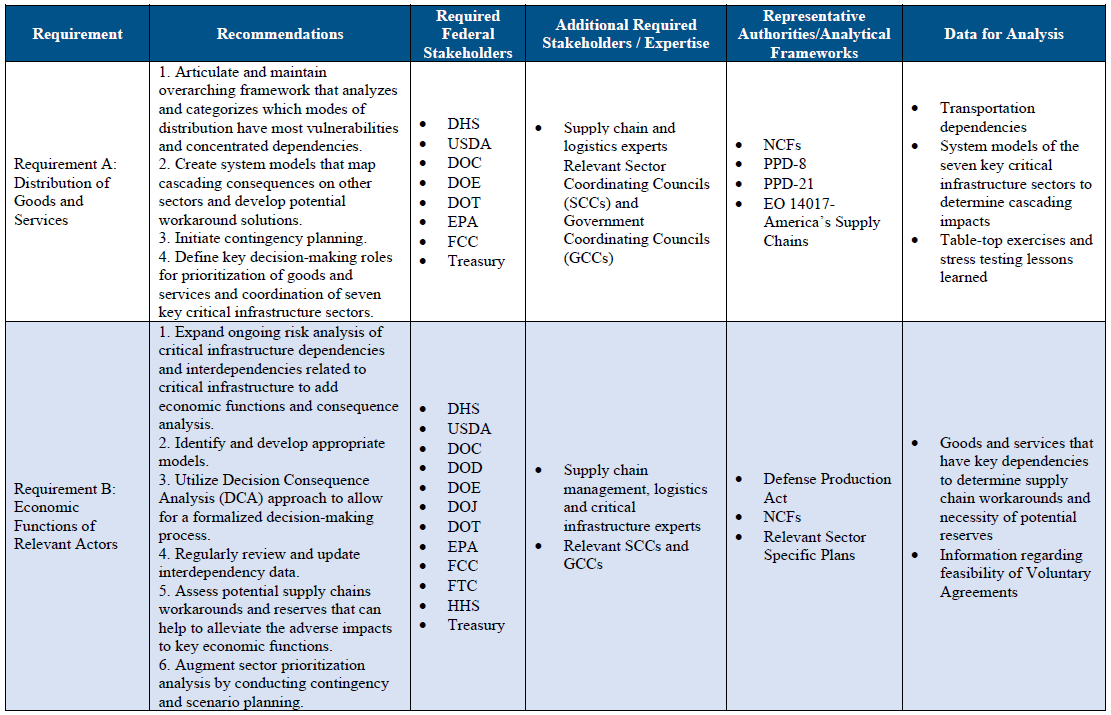The U.S. maintains a robust architecture of authorities, policies, plans, and frameworks for Federal Mission Resilience and domestic incident preparedness, response, and recovery. The goal of maintaining and restoring the U.S. economy in response to a significant event is fundamentally embedded into many components of this architecture.
The key finding of the COTE response is that, broadly, COTE plan requirements included in the FY 2021 NDAA are addressed through existing authorities, policies, plans, and frameworks. Creation of a COTE plan with a singular economic focus, coupled with new response frameworks, has the potential to create confusion and duplicate existing response and recovery mechanisms. However, the fundamentally important concept of economic recovery and response detailed in the COTE requirement should be deeply integrated within existing incident response frameworks to avoid creating an additional layer of potentially divergent planning and response activities operating in parallel to already established procedures. In lieu of developing a standalone COTE plan, the federal government should continue to refine and strengthen existing authorities, policies, plans, and frameworks for Federal Mission Resilience and domestic incident preparedness, response, and recovery. This COTE response provides several specific recommendations for how the federal government can continue to enhance the ability to maintain and restore the U.S. economy in response to a significant event.
…
To support development of the COTE response, CISA identified seven key priority critical infrastructure sectors for focus when reviewing plans and procedures. This determination is based on research, interagency and private sector stakeholder discussions, survey responses, and advice from subject matter experts. The seven key critical infrastructure sectors are: Energy, Communications, Information Technology, Financial Services, Food/Agriculture, Transportation, and Water/Wastewater. These priority sectors should be validated and updated via existing risk management forums and councils after the further analysis called for in Recommendations 1.1 and 1.2.
…



